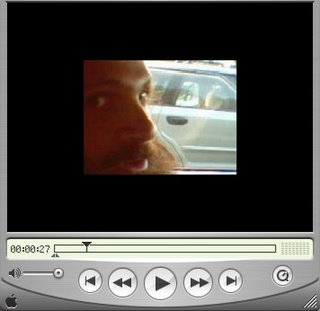Driving--
Downtown Paterson, especially on a hot summer day, is a driving nightmare. However, I am feeling a little nostalgic for those packed streets, the slow crawl through that knot of intersections where buzz the mysterious commercial convergences between hip-hop clothiers, cellphone wallahs, dollarstore clerks, Peruvian restaurateurs. All more lively than the “dead” industry around the nearby Falls.
Before I left, I wanted to capture (with my Vidster) at least some small sense of one of the more disconcerting elements of this traffic pattern, the way in which pedestrians will walk right out into the middle of traffic—perhaps a form of territorializing, protest, or more simply, impatience. Even parents with baby carriages will make their way in front of slowed cars—of course slowing things down all the more—to get from exactly the point where they were to exactly the point they want to be. And for all that impatience, oddly enough, Paterson comes off as a city of flaneurs.
The soundtrack on the radio seems appropriate now in retrospect, but the sound of Paterson itself has more poetry. I felt almost embarrassed listening to NPR’s wistful, effortless version of poetry while crawling through the Williams’ hard-worked-upon source material as well as through the bodies of the actual hard-working themselves, “Who are these people (how complex/ the mathematic) among whom I see myself/ in the regularly ordered plateglass of/ his thoughts, glimmering before shoes and bicycles?” I have no idea who Bob Edwards is interviewing, but the poet on the radio regales us with this bit of stellar scholarship: “You know Whitman was not an English professor. As far as I know, he didn’t have an office or tenure.” Gee, thanks. I’m sure if there were any poets on the streets of Paterson at the time, they would also be able to add that he wasn’t having no Sunday tea with Bob Edwards on the radio, either.
Labels: Buicks, drift adventure, driving, NPR poetry, Paterson (City), video, vidster

















